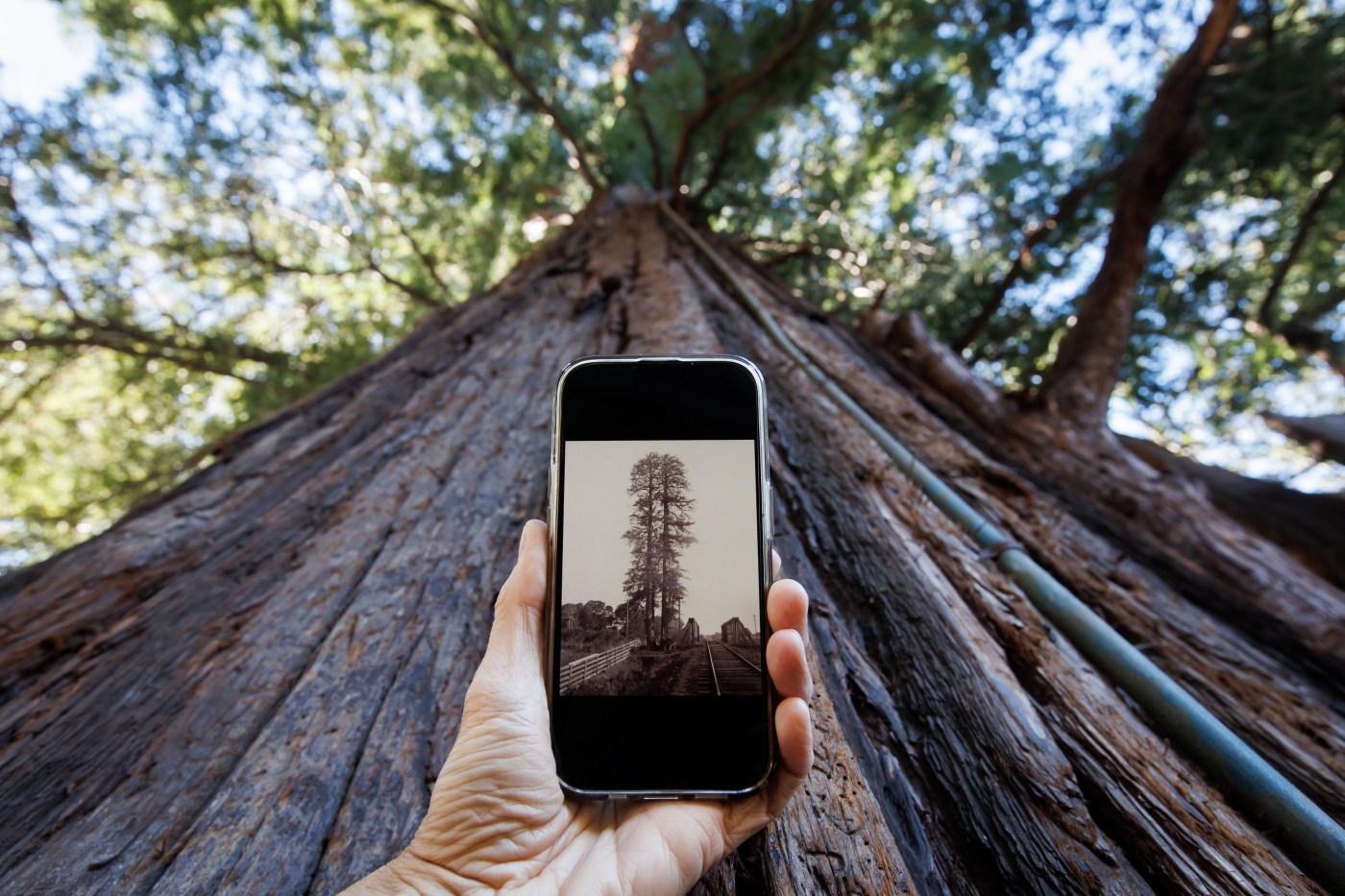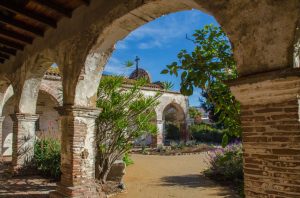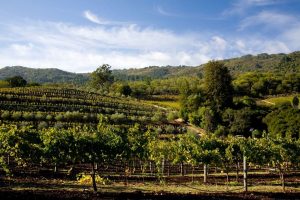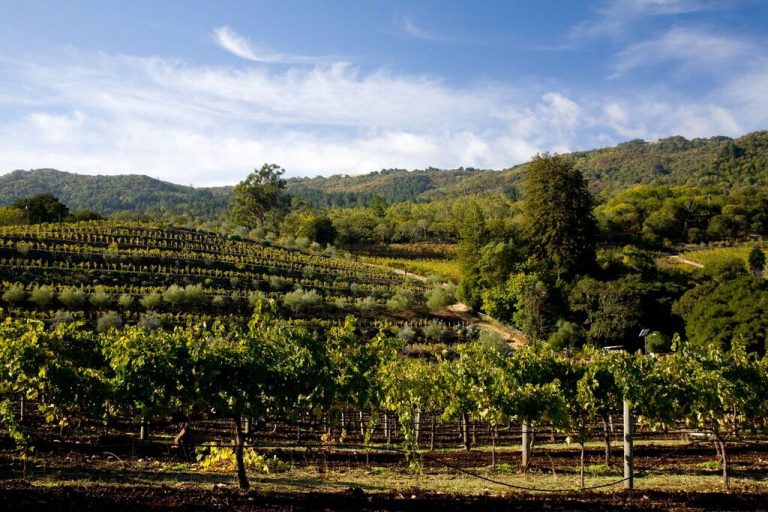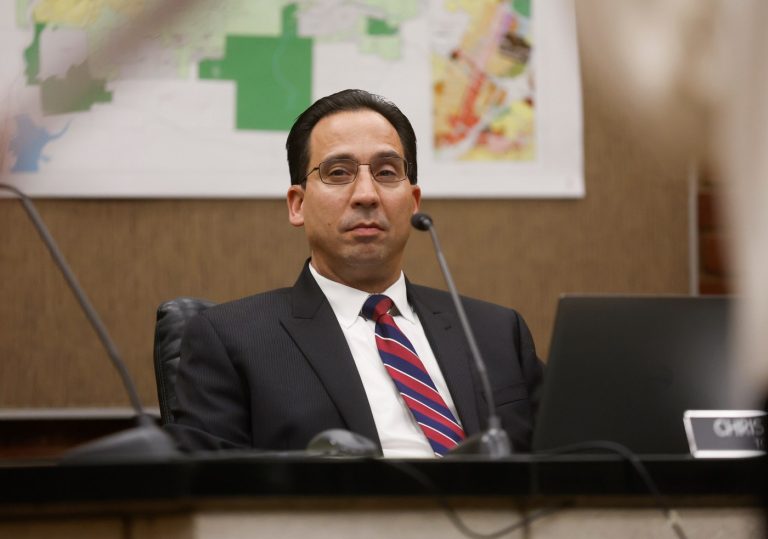For centuries, the famed redwood tree El Palo Alto has towered over the birth and growth of its namesake city, a witness to prosperity.
But something’s wrong: its official history.
New research by Palo Alto resident Jeff Watt, an electrical engineer with a dogged devotion to facts, is separating truth from fiction.
His findings — based on old newspaper clippings, photos, translated diaries and ephemera stored in the deep recesses of libraries — detail the tree’s long-mysterious past, contradicting the 100-year-old plaque that sits at its trunk, as well as many other historical accounts.
“There’s a lot of incorrect information,” said Watt, who hopes his insights and well-organized evidence will help the tree earn State Historical Landmark status. A previous effort in 1969 was rejected due to lack of evidence.
“What happens,” he said, “is that people describe something that’s not really quite right, and then it just gets repeated over and over again. Eventually, it becomes accepted as fact. But it’s not.”
He wondered: Is El Palo Alto, located near the intersection of Palo Alto Avenue and Alma Street near El Camino Real, really the same towering tree seen by California’s earliest explorers?
Did Spanish explorer Gaspar de Portolá and his expedition camp under its boughs?
Did it once have a twin?
Yes. No. Yes. But it split much earlier than we thought.
Even the tree’s age is in dispute.
“In this day and age of easy internet research, Jeff’s work is a testament to old school, rigorous research methods,” said Christine Hult-Lewis, curator of pictorial collections at UC Berkeley’s Bancroft Library. “This involves going back to the original primary sources, questioning earlier assumptions, and asking as many questions as possible.”
According to Steve Staiger of the Palo Alto Historical Association, “Jeff has investigated the tree with a thoroughness that would impress the most serious historian.”
Watt has no training in historical research. With a Ph.D. in electrical engineering from Stanford, he designs computer chips for the global semiconductor company Altera.
“I’m very much data-driven and evidence-based and detail-oriented,” he said. “I don’t necessarily trust what other people say.”
His curiosity in local history was first piqued by an odd zoning rule, discovered while rebuilding his home near Palo Alto’s Esther Clark Park, a hidden gem of a neighborhood tucked between winding hills. Most lots have 30- to 40-foot setbacks; his was 60 feet.
Using Palo Alto’s vast historical archives, he found that his enormous setback was created during the community’s 1959 annexation by the growing city. But it was never updated.
Next, he probed the peculiarity of a nearby street. In Palo Alto, the road is spelled “Manuela.” But in Los Altos Hills, it gains an extra L: “Manuella.” He learned that the entire route — named after a daughter of early settler Juana Briones — was initially misspelled with the extra consonant. The city of Palo Alto later fixed it; Los Altos Hills, inexplicably, did not.
He wondered about El Palo Alto, the enduring emblem of his town and alma mater. In the tree’s youth, surrounded by grasslands, it served as the primary sentinel and gateway to the region. Directly translated, Palo Alto means “tall stick” in Spanish, but early Spanish explorers likely used the phrase to describe the tall tree.
The Stanford family’s ranch was named Palo Alto Stock Farm in honor of the tree. The new town of University Park soon adopted the tree’s name. Stanford University’s mascot – costumed, dancing and sometimes inebriated – is a human-size replica.
No one knows how a coastal mountain species got its start in the valley’s dense clay soil, on the banks of San Francisquito Creek.
As years went by, it endured wind, parasites, droughts, floods, homeless encampments and the thick smoke of passing trains. Southern Pacific Railroad and Stanford University constructed a concrete wall to protect the tree from erosion. When its top died, it was cut, so El Palo Alto is shorter than it used to be.
By the mid-1920s, its days seemed numbered. It couldn’t drink; its roots were dry due to the valley’s proliferation of wells. And it couldn’t breathe, its foliage covered by ashen gray particulates.
But interventions – such as capped wells, cleaner trains and irrigation – have helped save the life of the venerable tree.
Now it looks unremarkable, just one of many redwoods, oaks and other trees clustered along the Menlo Park border.
California’s oldest living landmark, it is portrayed — sideways, like a tiny hairbrush — in a 1776 map by priest Father Pedro Font, diarist of expedition leader Juan Bautista de Anza.
Field notes describe the expedition’s arrival at “the arroyo of San Francisco, on whose bank is the very tall redwood. … We arrived at its trunk and saw that it was not a single tree but two trees very close together.”
Based on Font’s description, Watt is convinced that Anza saw our modern-day El Palo Alto.
The tree’s official plaque gets a few things wrong. The 1769 expedition led by Spanish explorer Gaspar de Portolá likely camped not under the tree but someplace closer to today’s Stanford West apartments and on the Menlo Park side of the creek. While 18th-century measurements weren’t exact, the notes say that Portolá’s creekside campsite was “a quarter of a league” — about two-thirds of a mile, based on Watt’s calculations — from the tree.
Spanish missionary Padre Francisco Palóu didn’t erect a cross at the tree to mark the site of a proposed mission, “later built at Santa Clara.” Based on Font’s notes, the cross stood upstream. And Palóu’s plan for a mission shifted to San Francisco, not Santa Clara, according to later documents.
Different historic panels aren’t entirely true, either. The photo caption near the tree says that one trunk was swept away by a flood in the 1880s. A plaque in downtown Palo Alto, across from City Hall, says the same thing.
When was it suddenly alone?
Related Articles
Today in History: November 18, more than 900 die at Jonestown
Today in History: November 17, Arnold Schwarzenegger sworn in as California governor
Today in History: November 16, Nixon authorizes Alaska pipeline
Today in History: November 15, Trump friend and ally Roger Stone convicted
Urgent deadline looms to save historic Sakauye farmhouse in San Jose
Watt concluded, based on a photograph by famed photographer Carleton Watkins, that it was still a twin around 1874. But by 1877, a newspaper article about the Stanford farm shows just a lonely speck on the horizon. “It was a single tree,” said Watt.
How old is it? That remains murky. The most commonly cited age is 1,067 years, based on an 1880s-era dendrology ring count of its felled twin. In 1948, a federal study reported it was only 600 years old. In 1963, UC Berkeley estimated it was between 300 to 500 years old.
The tree still has many seasons left to grow, ecosystems to support and future stories to tell.
Watt’s new effort is to secure state recognition, which will add further protection. Because the tree is now proven to be linked with events that had a profound influence on California’s history, it meets the criteria, he said. He’d also like to see those plaques fixed.
”Jeff Watt’s research,” said councilmember Pat Burt, a former three-term mayor with a longstanding interest in city history, “will be valuable to establishing the appropriate and important historic recognition of the El Palo Alto tree and nearby related sites.”
